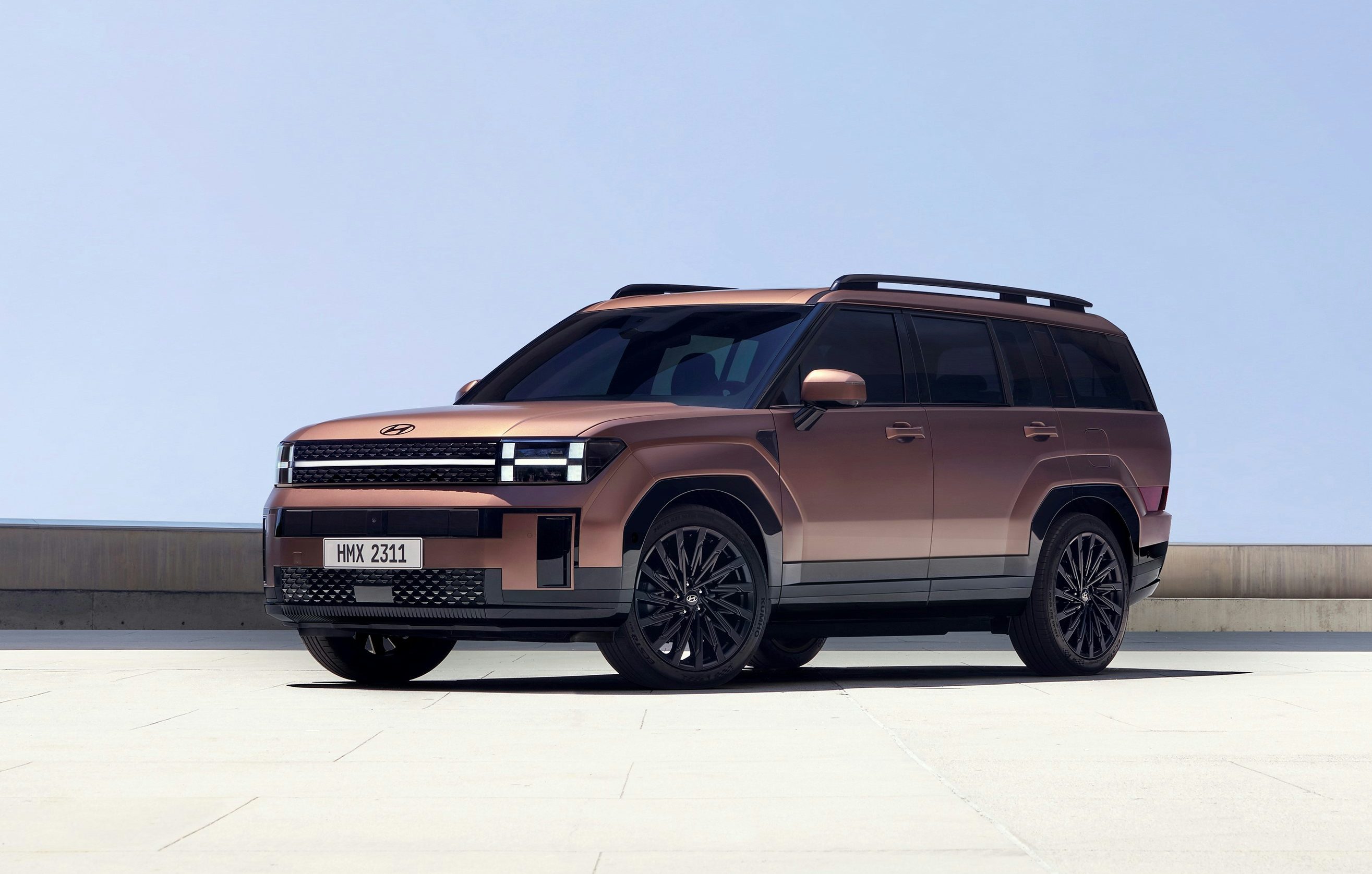Hyundai Recalls Over 135,000 Santa Fe SUVs for Fire Risk: A Wake-Up Call for the Auto Industry
By HomeBrasil |

On a crisp autumn morning in Seoul, South Korea, Hyundai Motor Company executives gathered in the sleek, glass-and-steel headquarters along the Han River to confront a crisis threatening to tarnish one of their best-selling models. On October 8, 2025, the South Korean auto giant announced a recall of 135,386 Santa Fe SUVs from the 2024 and 2025 model years, equipped with the 2.5-liter turbo gasoline engine, due to a manufacturing flaw that could spark a fire in the engine compartment during frontal collisions. Identified during crash tests by the National Highway Traffic Safety Administration (NHTSA) in the United States, the defect exposes not only production line vulnerabilities but also the broader challenges of an industry racing to balance innovation and safety. For American and global owners who view the Santa Fe as a beacon of family-friendly comfort and cutting-edge technology, this recall serves as a stark reminder: even the most modern vehicles can harbor hidden dangers.
Details of the Recall: A Hidden Flaw with Fiery Consequences
The recall centers on a seemingly minor component: the positive “B+” terminal cover of the starter motor. Produced between December 28, 2023, and July 7, 2025, the affected vehicles—exclusively non-hybrid models with the 2.5-liter turbo four-cylinder engine—feature an improperly installed cover on this electrical component. In a frontal collision, deformation of the engine bay could cause the exposed terminal to contact the cooling fan blade, triggering an electrical short circuit capable of igniting a fire.
Technical Scope and Scale of the Action
The NHTSA, the U.S. federal agency overseeing vehicle safety standards, pinpointed the issue during a frontal crash test under its New Car Assessment Program (NCAP) in November 2024. Post-crash inspections of a 2024 Santa Fe revealed smoke emanating from the engine, signaling potential thermal damage. Hyundai, working with the agency, replicated the defect in internal tests, estimating that approximately 1% of the vehicles—about 1,350 units—could be at risk. In total, the recall encompasses 135,386 SUVs, a significant portion of the over 200,000 Santa Fe units sold in the U.S. across the two model years.
Remedial Measures and Notification Timeline
Hyundai dealers will perform a free inspection of the starter motor, reinstalling the terminal cover as needed—a process the automaker says takes less than an hour. Owners will receive notification letters starting December 1, 2025, with instructions to schedule repairs. In the interim, Hyundai advises parking affected vehicles outdoors, away from flammable structures, to minimize fire risks even in stationary conditions. Owners seeking immediate clarity can enter their vehicle identification number (VIN) on the NHTSA’s website or contact Hyundai’s customer service at 855-371-9460, referencing recall code 285.
No Real-World Incidents, But a Testing Triumph
To date, Hyundai reports no accidents, injuries, or fatalities tied to the defect in real-world driving. The sole “thermal incident” occurred in the controlled environment of the NCAP test, underscoring the value of rigorous crash protocols. Yet, this late discovery raises questions about factory oversight: how did a manual assembly error slip through the cracks of automation?
Historical Context: Hyundai’s Rise and Recent Stumbles
Hyundai, once a budget brand with a shaky reputation, has transformed into a global powerhouse over the past two decades, fueled by billions in R&D investment. Founded in 1967 by Chung Ju-yung, the company rose from the ashes of the Korean War to become the world’s third-largest automaker, with a presence in over 190 countries and a growing share of the U.S. SUV market, which accounts for 40% of its global sales. The Santa Fe, launched in 2000 as a midsize crossover, has evolved into a family favorite, lauded for its smooth handling and advanced driver-assistance features.
Past Recalls and Quality Control Challenges
Hyundai’s ascent, however, has not been without hiccups. In 2015, the company recalled 470,000 Sonata sedans over fire risks tied to faulty ignition switches, a scandal costing over $100 million in settlements. More recently, in 2024, the Palisade faced a recall for seatbelt issues affecting 568,000 units, while the Ioniq 5 N was flagged for electrical risks. These incidents paint a picture of an ambitious automaker stretched thin by rapid expansion across plants in South Korea, the U.S., and Mexico, where the Santa Fe is built in Montgomery, Alabama.
The Santa Fe’s Evolution: From Redesign to Vulnerability
The current Santa Fe generation, unveiled in 2023 with a boxy design inspired by classic Land Rovers, marks a stylistic and technological leap for Hyundai. Priced from $33,950, it boasts a spacious cabin, a 12.3-inch curved display, and optional all-wheel drive. Yet, the rush to roll out the 2025 model, with upgrades in connectivity and efficiency, may have contributed to assembly oversights. Suppliers like Mobis, Hyundai’s electrical components arm, are now reviewing protocols to prevent repeats, but analysts note that reliance on outsourced labor during production peaks heightens such risks.
Strategic Rationale: Safeguarding Reputation Amid Crisis
For Hyundai, this recall is more than a logistical headache—it’s a calculated move to protect consumer and investor trust. With the company’s stock hovering around 180,000 South Korean won on the Seoul Stock Exchange in 2025, swift transparency could limit reputational damage to its “dependable brand” image. Hyundai estimates recall costs at $20-30 million, a fraction of its $120 billion annual revenue, but the real stakes lie in averting lawsuits and preserving market share in the fiercely competitive midsize SUV segment, where rivals like the Toyota RAV4 and Honda CR-V reign.
Benefits for Owners and Dealer Networks
For stakeholders, owners gain peace of mind with free repairs and, potentially, extended warranties on electrical components. Dealerships, meanwhile, see an opportunity for upselling: during repair visits, technicians can pitch maintenance packages or accessories, turning a setback into revenue. For the NHTSA, the recall reinforces its oversight, ensuring completion by late 2026 with ongoing monitoring.
Investments in Prevention: A Forward-Looking Pivot
Strategically, Hyundai is doubling down on artificial intelligence in assembly lines, with computer vision scanners to detect misaligned electrical terminals. Announced in September 2025, this initiative aims to cut defects by 30% by 2027, aligning with the company’s “Progress for Humanity” vision.
Industry Trends: Recalls Surge in the Electrification Era
The Santa Fe recall fits into a broader wave of automotive recalls, driven by increasingly complex electrical systems and the shift toward electrification. In 2025, the NHTSA processed over 1,000 recalls, covering millions of vehicles, with Ford setting a record by recalling 1.3 million F-150 trucks for fuel pump issues. Globally, the industry spends $40 billion annually on recalls, a burden reflecting not just manufacturing flaws but economic pressures like component inflation and semiconductor shortages lingering from the pandemic.
Economic and Regulatory Pressures
The post-pandemic economy, with high interest rates in the U.S. and Europe, pushes automakers to accelerate production to maintain margins, often at the expense of quality control. Regulators like the NHTSA and Europe’s EASA are tightening standards, mandating stricter NCAP tests that expose latent defects. In markets like Brazil, where the Santa Fe is imported and sold for about $45,000, agencies like Procon and Inmetro monitor global recalls, potentially echoing this action.
The Electrification Push
Ironically, as Hyundai invests $7.4 billion in U.S. battery plants by 2028, recalls like this highlight risks in combustion-engine vehicles, which still dominate 70% of the market. The trend points to consolidation: smaller automakers may be absorbed by giants like Hyundai-Kia, which command 10% of global sales.
Challenges Ahead: From Logistics to Consumer Trust
Despite Hyundai’s prompt response, the recall poses multifaceted hurdles. Logistically, supplying replacement covers for 135,000 vehicles could strain supply chains, especially with U.S. port strikes looming in November. Regulatory risks loom large: the NHTSA could impose fines if owner compliance rates falter—historically, only 70% of owners respond to recalls.
Employee Concerns and Operational Strains
Internally, workers at the Montgomery plant report exhaustion from extended shifts, with unions pushing for better inspections. Operationally, the defect exposes weaknesses in manual assembly, where humans still outpace robots in fine precision.
Reputational Risks and Legal Exposure
The greatest challenge is restoring confidence: a single fire could ignite class-action lawsuits, akin to the Takata airbag debacle. Analysts predict a 2-3% dip in Santa Fe sales in Q4, trimming Hyundai’s EBITDA by $50 million.
Public and Market Reactions: A Social Media Firestorm
The recall announcement sparked a digital blaze, with #HyundaiRecall climbing to 50,000 mentions on X within 24 hours. Markets reacted with mild volatility: Hyundai’s stock dipped 1.2% in Seoul, while the S&P 500 Auto Index held steady. Bloomberg analysts call the impact “contained,” but warn of ripple effects across the sector.
X Sentiment: Fear and Frustration
On X, Santa Fe owners voiced visceral alarm. A Los Angeles driver posted about the dread of driving their 2024 SUV with their family, calling it “a ticking time bomb on wheels,” a sentiment echoed in 10,000 similar interactions.<grok:render type=”render_inline_citation”> 0</grok:render> Others, like a Detroit mechanic, slammed Hyundai for “cutting corners on safety,” predicting informal boycotts in enthusiast forums.<grok:render type=”render_inline_citation”> 3</grok:render> Yet, there’s optimism: auto influencers praised the free repairs, calling them “proof of customer commitment.”
Market Ripples and Public Opinion
Dealers report a 30% spike in inquiries, with some customers delaying purchases. J.D. Power surveys show a 5-point drop in Hyundai owner satisfaction, but the automaker is countering with social media campaigns emphasizing “safety first.”
Lessons Forged in Fire
As December nears, the Santa Fe recall marks not an endpoint but a pivot for Hyundai: a chance to reforge its narrative of responsible innovation. With the affected fleet representing under 1% of its SUV output, the financial hit is manageable, but the reputational stakes could linger for years. Observers should watch repair compliance rates, potential expansions to markets like Brazil and Europe, and AI-driven assembly upgrades. In an industry where a spark can ignite reputations, Hyundai emerges more resilient—or at least, more vigilant. The road ahead depends on lessons learned in the heat of adversity.




